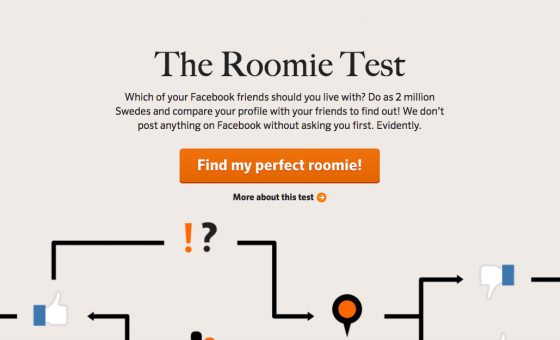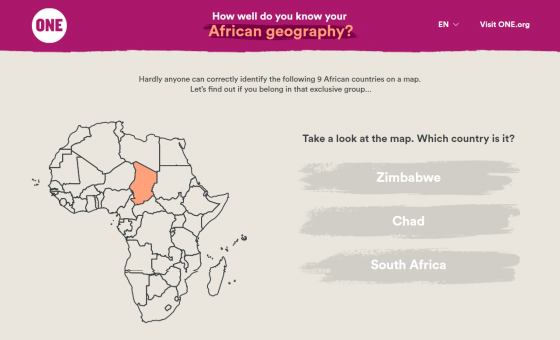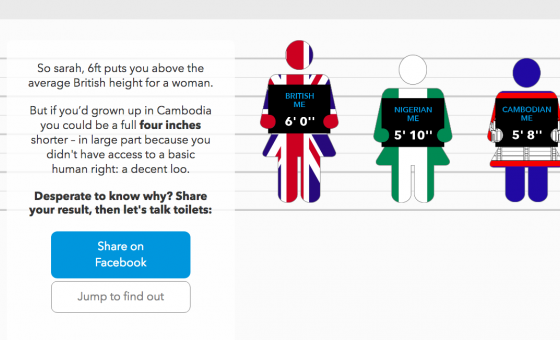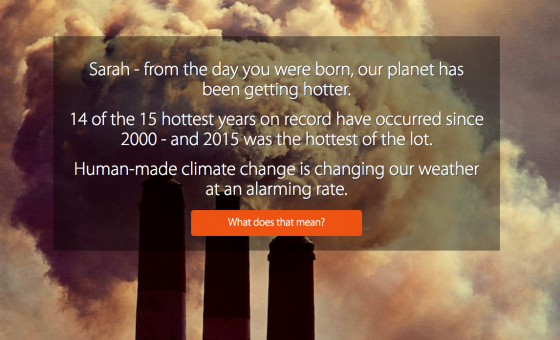The internet is full of enticing content, all competing for our attention. So how can digital campaigners ensure their organisation’s message cuts through the noise? At Forward Action, we've worked with a number of progressive organisations to develop bespoke microsites. Usually, their goal is to encourage engagement beyond the organisation’s typical supporter base and spread their campaign message.
At Forward Action, we've worked with a number of progressive organisations to develop bespoke microsites. Usually, their goal is to encourage engagement beyond the organisation’s typical supporter base and spread their campaign message.
Microsites - what are they?
Technically, a microsite just means a web page or platform that’s independent of an organisation’s main website, often built for a specific campaign or action. Here, we’re talking mainly about value-exchange microsites: i.e. a tool that gives you a personalised experience or some information about yourself - such as what the weather was like on the day you were born - along with a signup ask.
These microsites can be innovative, powerful and versatile tools. Done right, they are highly effective for growing your supporter email list, reaching new audiences, and creating dialogue and interest around key campaign moments. For example, the recent 9 Countries Quiz which Forward Action developed with the ONE campaign has so far been used over 2.5 million times, recruiting 500,000 new supporters for ONE’s girls education campaign.
But microsites aren’t guaranteed to succeed - so here are five key ingredients for how to get them right:
1: Offer a personalised, curiosity-piquing, universally relevant insight about the user. It’s not a campaigning tool, but the Roomie Test is a great example of this. It analyses your Facebook history and Facebook friends to tell you which one of your friends you should move in with.

So why does it work..?
- It’s personalised: your result is based on your personal Facebook history and your list of Facebook friends.
- It’s curiosity-piquing: people will be curious to see which friend the calculator picks out.
- It’s universally relevant: everyone has friends. Everyone has had a roommate at some stage in their life. Everyone has people they think they’d like to live with - and people they know they’d definitely rather not.
- It provides insight, not just information: This is key! Think about what people want to find out, and how it links with your campaign. It’s not enough to simply pick out a campaign statistic - this won’t engage people on a wide scale.
2: Create something people want to engage with - and make it easy for them to do so. People are busy and easily distracted. You can’t expect them to stay engaged with your microsite if it’s too involved, too long, or the concept is simply not very interesting. Encourage users to engage through to completion by ensuring your journey is made up of a few simple steps.
The recent 9 Countries Quiz for the ONE campaign is a great example of how to develop a highly shareable concept, and make is easy for users to engage with.

So what does that mean in practise…?
- Keep your copy short and concise - this includes clear instructions for how to share and sign. By doing so you will encourage people to stick with you until the end, engage with your message and take the desired action. It’s crucial not to overwhelm users with lots of dense copy.
- Ensure the site delivers an enjoyable user experience. Make sure it is mobile optimised and that each stage is short and easy to do.
3: Prioritise the share ask. Present anyone who engages with your microsite with a clear and prominent share ask. If you can add some theory of change or a teaser to your call to action, all the better. On the best performing microsites, it’s this sharing mechanism that enables them to go viral - which, crucially, reduces your cost per new supporter. The WaterAid height calculator offers a great example of what this looks like in practice.

4: Provide a personalised “pass it on” Facebook share. At the heart of many successful value-exchange microsites is one key insight: people like to share things that say something about them. Your Facebook share copy should reflect this: include the user’s personalised result and - if possible - some copy that encourages their friends to find out their result too. This “here’s me, what about you?” mechanism is a key driver of viral campaigns - think of the Ice Bucket Challenge, for example.
Labour’s NHS Baby Number tool offers another good example of this in action. Over 1.1 million people engaged with the tool, posting their baby number online and encouraging others to do the same. In doing so, they helped the Labour party spread the message that the party cared about the NHS and were the people to vote for if you did too.

5: Make sure that it is more than just a fun toy - link it back to your campaign! Find a creative hook which links directly back to the your campaign message such as in the SumOfUs Weather App. After users have received and shared their result, bring the focus back to the issue you are trying to highlight.
By now, users have probably learnt something new about themselves, which might even make them look at the issue in a whole new light.

One final point to highlight: process. These five points are simple in theory, but coming up with and developing a concept that puts them into practice is the tricky part. Finding that concept requires a good, goal-focussed process, and in our experience there are three process points in particular that are crucial:
- Have a clear goal and don't dilute it. Are you trying to grow your email list, or communicate campaign or policy messages? Decide which takes priority, then plan everything to hit that goal, at the exclusion of others if necessary: it’s better to come out with a tool that hits one goal well than two goals badly.
- Test, learn and try again. As with anything creative, not every idea flies. The crucial thing is to fail fast, learn from what could have been better, and keep testing new approaches.
- Think from the user's perspective. Ask yourself: what would a real person actually want to do, not what would we like them to want to do?
Note to readers: As with anything, if you have a great idea that breaks all these rules... go for it! After all, here's one that breaks almost all these rules and has so far been used over 640 million times...


